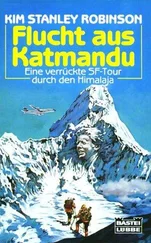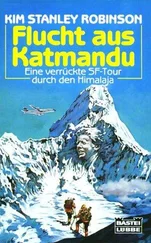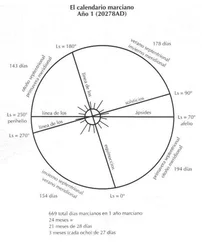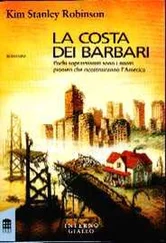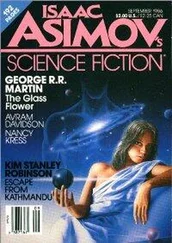CQ: How many metaphors are you going to mix into this stew?
PC: They are all part of a heroic simile, obviously, having to do with landscape and gravity. A very heroic simile, if I may say so.
JQ: Heroic!
PC: That’s right Joe. You are a good kid. You are a patriotic American toddler. So Charlie, can you write me some speeches putting this into inspiring and politically correct terminology?
CQ: Why do you have to be politically correct anymore? You’re the president!
PC: So I am. More coffee? More hot chocolate?

ONE DAY AN E-MAIL CAME FROM LEOMulhouse, out in San Diego, forwarding a review paper about nonviral insertion. The RRCCES lab had gotten some really good results in introducing an altered DNA sequence into mice using three- and four-metal nanorods. In essence, Frank judged, the long-awaited targeted delivery system was at hand.
He stared at the paper. There were a bunch of other reasons piling up to go out to San Diego again. And San Diego was only one of several places he wanted to visit in person, or was being asked to visit. Taken together they implied much more travel than he had time to accomplish; he didn’t know exactly what to do, and so went nowhere, and the problem got worse. It wasn’t quite like his indecision fugue state; it was just a problem. But it was Diane who suggested that he string all the trips together in a quick jaunt around the world, dropping in on Beijing, the Takla Makan, Siberia, and England. He could start with San Diego, and the White House travel office could package it so it would only take him a couple of weeks at the most. A meeting, two conferences, and three on-site inspections.
So he agreed, and then the day of his departure was upon him, and he had to dig out his passport and get his visas and other documents from the travel office, and put together a travel bag and jump on the White House shuttle out to Dulles.
As soon into his flight as he could turn on his laptop, he checked out a video attachment in an e-mail that had come in from Wade Norton right before departure. The little movie appeared boxed in the middle of his screen, miniaturized so that Wade could show quite a lot. There was even a soundtrack—the opening shot, of the Antarctic coastline, was accompanied by a hokey high-wind and bird-cry combination, even though the sea looked calm and there were no birds in sight. The black rock of the coastline was filigreed with frozen white spume, a ragged border separating white ice and blue water. Summer again in Antarctica. The shot must have been taken from a helicopter, hovering in place.
Then Wade’s voice came over the fake sound: “See, there in the middle of the shot? That’s one of the coastal installations.”
Finally Frank saw something other than coastline: a line of metallic blue squares. Photovoltaic blue. “What you see covers about a football field. The sun is up twenty-four/seven right now. Ah, there’s the prototype pump, down there in the water.”
More metallic blue: in this case, thin lines, running from the ocean’s edge up over the black rocks, past the field of solar panels on the nearby ice, and then on up the broad tilted road of the Leverett Glacier toward the polar cap. At this pixel level the lines very quickly became invisible to the eye.
“Heated pumps and heated pipelines. It’s the latest oil tech, developed for Alaska and Russia. And it’s looking good, but now we need a lot more of it. And a lot more shipping. The pipes are huge. You probably can’t tell from these images, but the pipes are like sewer mains. They’re as big as they could make them and still get them on the ships. Apparently it helps the thermal situation to have them that big. So they’re taking in like a million gallons an hour, and moving it at about ten miles an hour up the glacier. The pipeline runs parallel to the polar overland route, that way they have the crevasses already dealt with. I rode with Bill for a few days on the route, it’s really cool. So there you have your proof of concept. It’s working just like you’d want it to. They’ve mapped all the declivities in the polar ice, and the oil companies are manufacturing the pumps and pipes and all. They’re loving this plan, as you can imagine. The only real choke points in the process now are speed of manufacture and shipping and installation. They haven’t got enough people who know how to do the installing. That’ll all have to ramp up. I’ve been running the numbers with Bill and his gang, and every system like this one can put ten cubic kilometers a year of water up on the polar cap. So depending on how fast the West Antarctic Ice Sheet breaks up, you would need some thousands of these systems to get the water back up onto the polar plateau, although really they should be spread out elsewhere in the world, because these will only run during the six months the sun is up.”
Here Frank got curious enough to get on the plane’s phone and call Wade directly. He had no idea what time it was in Antarctica, he didn’t even know how they told time down there, but he figured Wade must be used to calls at all hours by now, and probably turned his phone off when he didn’t want to get them.
But Wade picked up, and their connection was good, with what sounded like about a second in transmission delay.
“Wade, it’s Frank Vanderwal, and I’m looking at that e-mail you sent with the video of the prototype pumping system.”
“Oh yeah, hi Frank. How are you? Isn’t that neat? I helo’ed out there day before yesterday, I think it was.”
“Yeah it’s neat,” Frank said. “But tell me, does anyone down there have any idea how frozen sea water is going to behave on the polar cap?”
“Oh sure. It’s kind of a mess, actually. You know, when water freezes the ice is fresh and the salt gets extruded, so there are layers of salt above and below and inside the new ice, so it’s kind of slushy or semifrozen. So the spill from the pumps really spreads flat over the surface of the polar cap, which is good, because then it doesn’t pile up in big domes. Then in that layer the salts kind of clump and rise together, and get pushed onto the surface, so what you end up with is a mostly solid fresh water ice layer, with a crust of salt on top of it, like a devil’s golf-course-type feature. Then the wind will blow that salt down the polar cap, and disperse it as a dust that will melt or abrade surface ice, and whatever stays loose will blow off the polar cap in the katabatic winds. So, back into the ocean again! Pretty neat, eh?”
“Interesting,” Frank said.
“Yeah. If we build enough of these pumping systems, it really will be kind of a feat. I mean, the West Antarctic Ice Sheet will eventually all fall into the ocean, it looks like, or most of it. No one can see that stopping now. But we might be able to pump the equivalent in water back onto the East Antarctic Ice Sheet, where it’ll stay frozen and stabilized.”
“So what about the desert basins in the north thirties?” Frank said. “A lot of those are turning into salt lakes. It’ll be like a bunch of giant Salton Seas.”
“Is that bad?”
“I don’t know, what do you think about that? Isn’t the Salton Sea really sick?”
“I guess so, but that’s because it’s drying up again, right? And getting saltier? Run one of these systems to the Salton Sea and its problems would be over. I think you have to keep pumping water into this kind of a sea, to keep it from getting too salty and eventually turning back into a playa. Maybe in a few hundred years you could let that happen, if you wanted. I bet by then you wouldn’t. They’ll be hydrating the areas downwind, don’t you think?”
Читать дальше
Конец ознакомительного отрывка
Купить книгу



